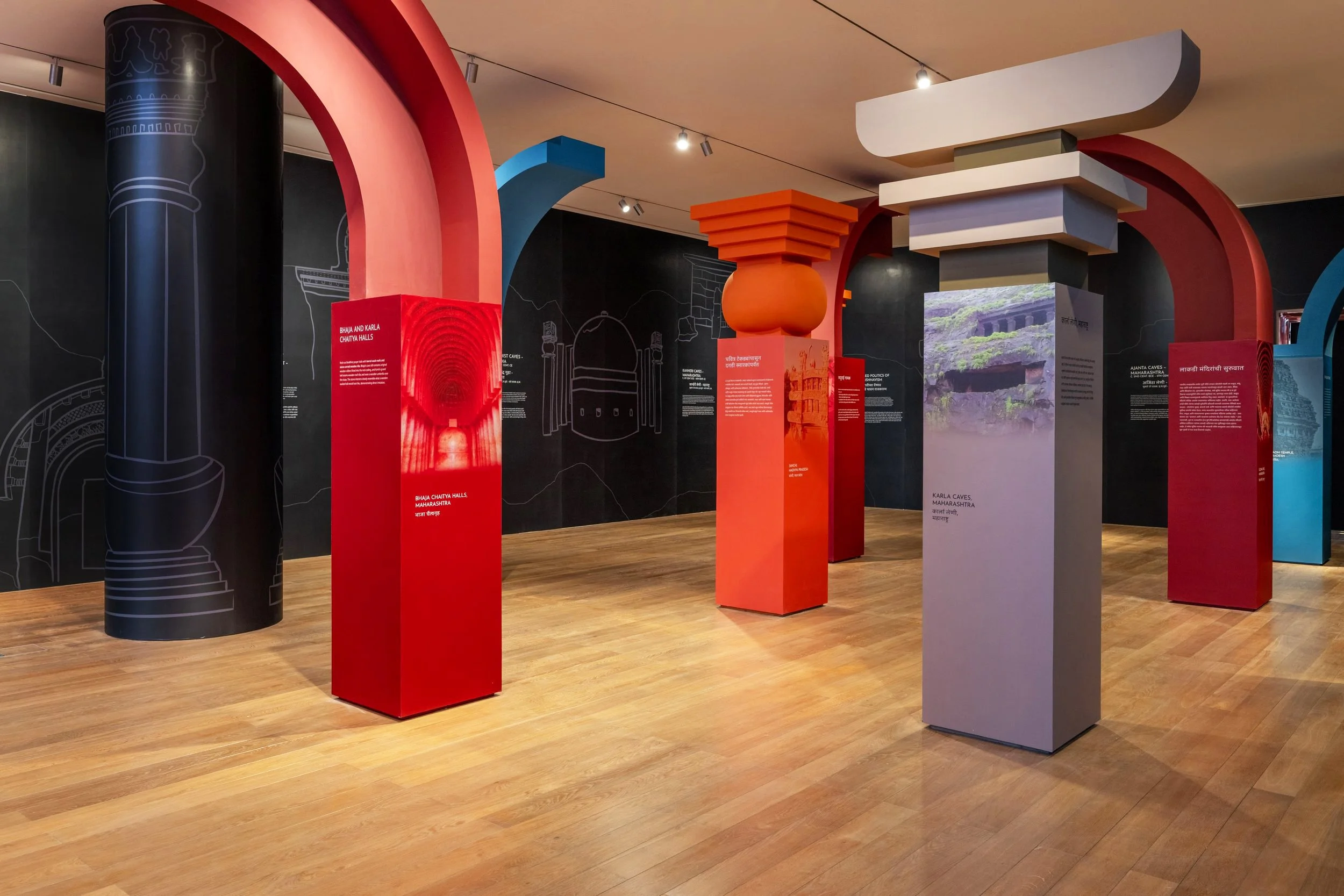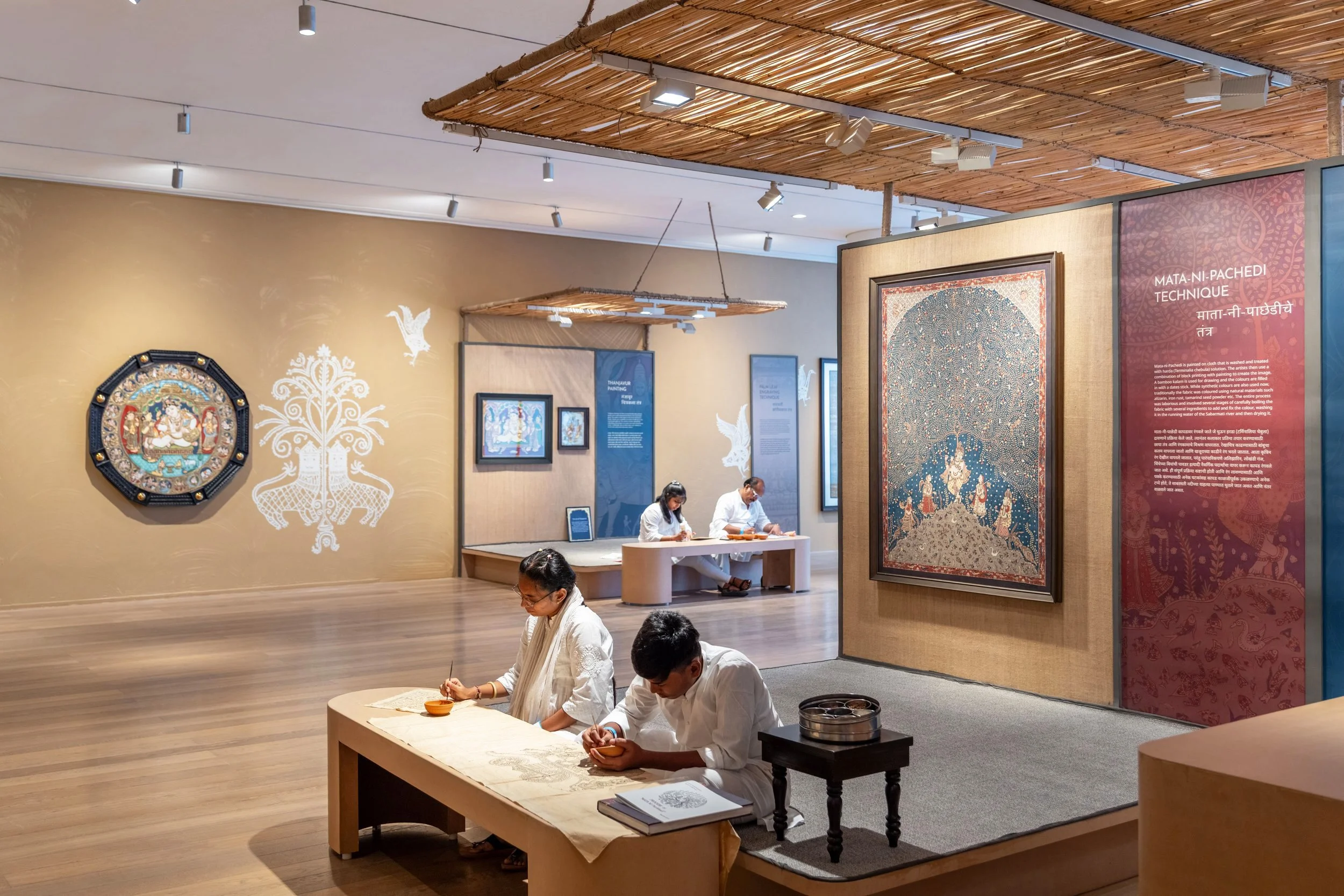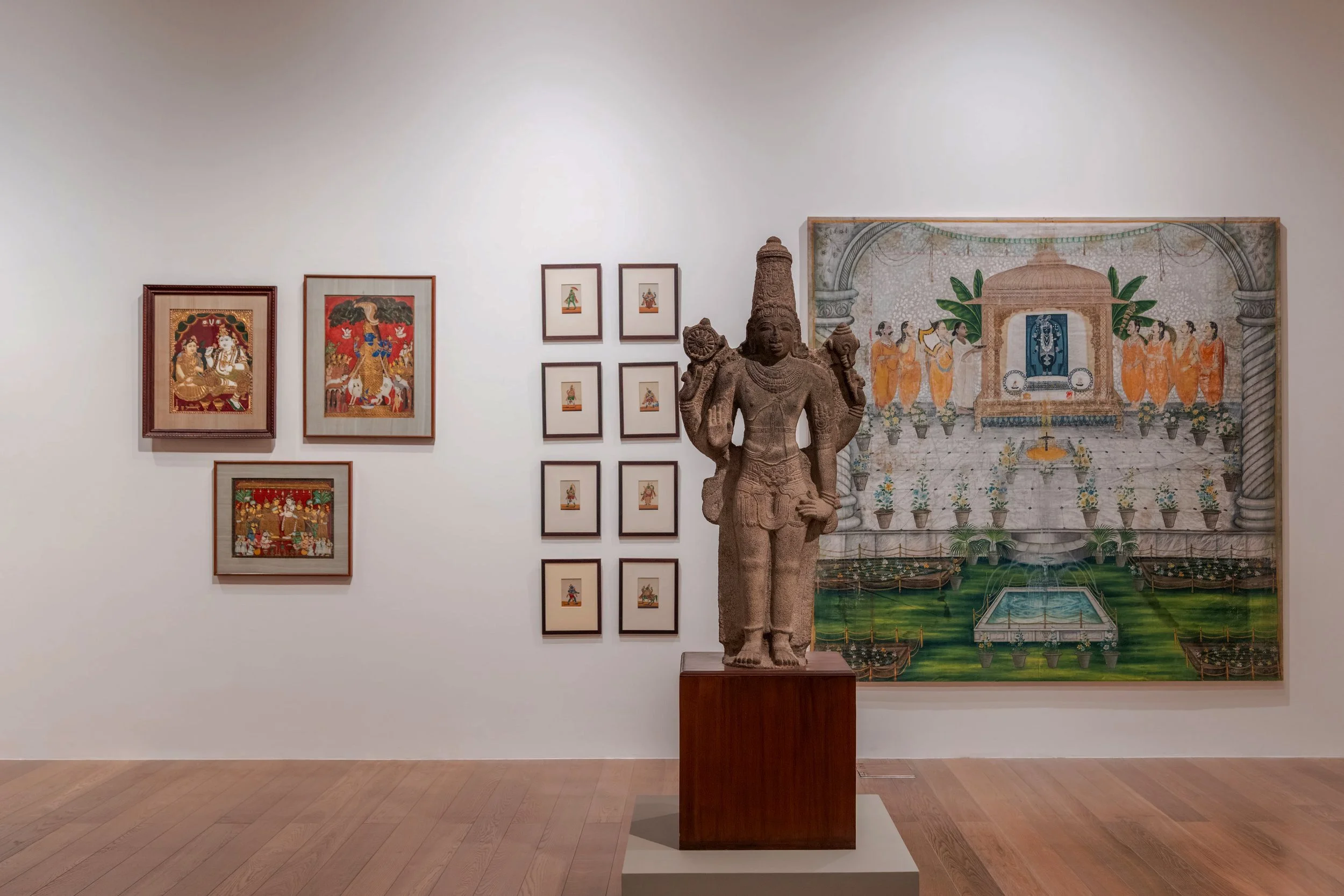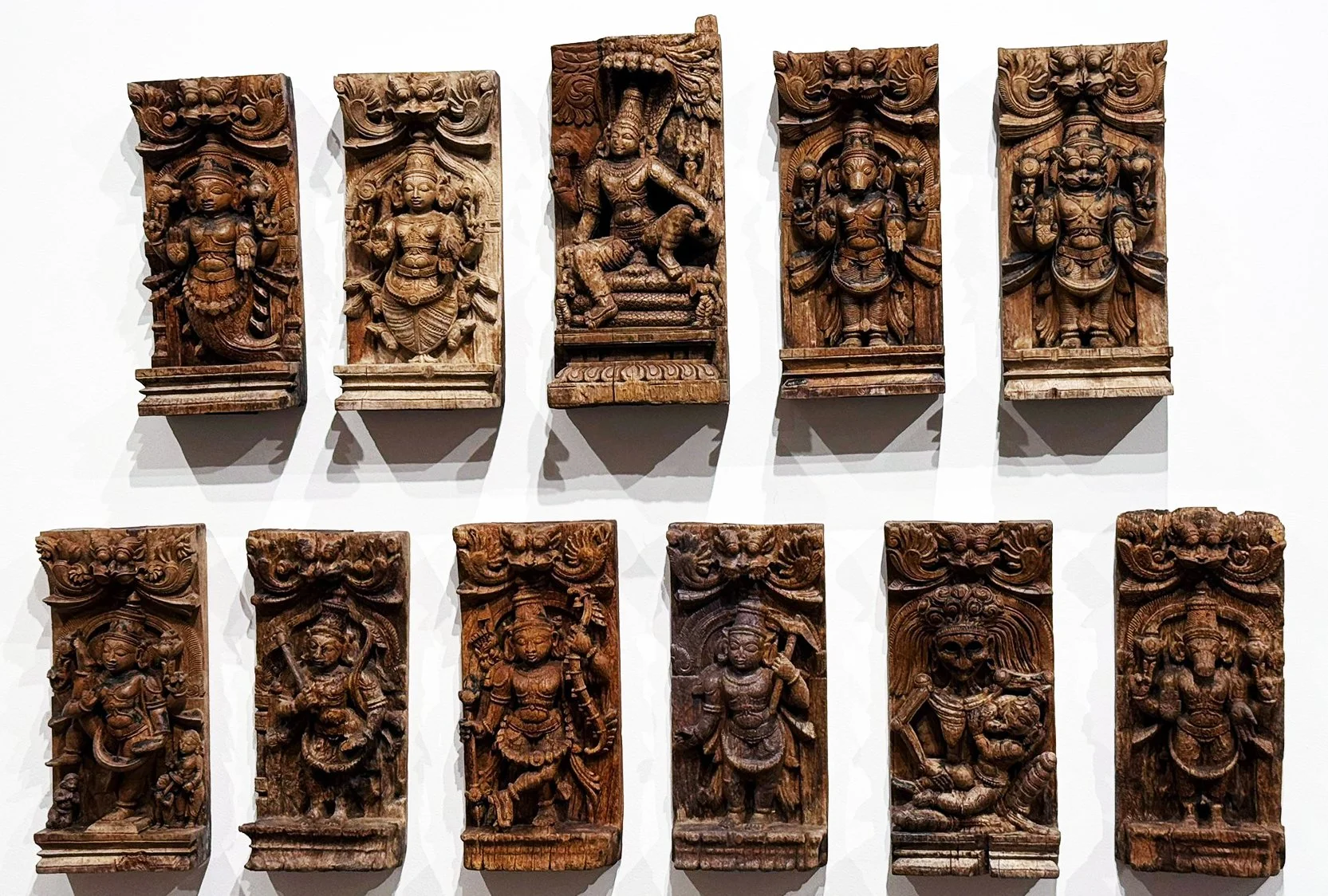Bhakti opens an immersive and enlightening dialogue between the viewer and devotional art. It showcases artworks made in reverence of Krishna.
Shreenathji in Divine Adornment – A Pichwai painting capturing the grace and splendour of Krishna in his Govardhan-lifting form, resplendent in intricate jewels and devotional symbolism.
text by Parrie Chhajed
In a world where devotion often lives quietly—in morning rituals, household shrines, whispered prayers, and temple bells—Bhakti elevates it to a form of collective artistic expression. It draws from the everyday but expands into the eternal. This summer, the Nita Mukesh Ambani Cultural Centre (NMACC)—a multidisciplinary arts space dedicated to preserving and promoting India’s artistic heritage across visual art, performance, design, and culture—presents Bhakti—Krishna’s Grace. The exhibition reflects on the divine power of Krishna and the devotional path of bhakti through the evolving lenses of art, history, and lived spirituality. It explores how the transformation of humankind and landscapes has unfolded through sacred narratives. Perspectives from artists, devotees, and storytellers converge to honor the enduring presence of Vishnu in Indian spiritual and artistic traditions.
Chennai-based art historian Ashvin E. Rajagopalan’s curation brings together myth, memory, and material practice. As Director of the Piramal Art Foundation, he helped establish the Piramal Museum of Art in Mumbai and founded Ashvita’s, a cultural platform for emerging and established Indian artists.
Ananta Shayana Vishnu – A sculptural depiction of cosmic repose, where Lord Vishnu lies on the serpent Ananta as creation begins, watched over by Brahma and Lakshmi in celestial harmony.
The journey begins with Vishnu’s Dream, a specially commissioned centerpiece anchoring the exhibition’s cosmological vision. A visual timeline follows—moving from early human settlements and cave dwellings to ancient temple architecture, culminating in a sensorial reconstruction of Tamil Nadu’s Vaikuntha Perumal Temple, highlighting sacred geometry and cosmic design in early Indian architecture.
One of the more thought-provoking parallels often drawn in this context is between Vishnu’s Dashavatar and Darwin’s Theory of Evolution. Though rooted in mythology and science respectively, the progression of the avatars appears to echo the arc of life—from Matsya (fish) to Kurma (tortoise) to Varaha (boar) and Narasimha (man-lion), symbolising transitions from aquatic life to mammals to early humans. The later avatars—Vamana, Parashurama, Rama, Krishna, and Buddha—map onto stages of human development, from survival and order to emotional and spiritual evolution. Kalki, the final avatar, possibly hints at a future transformation—ecological or spiritual. Whether coincidental or intuitive, the parallel adds another dimension to the global relevance of these spiritual and religious perspectives.
This theme continues in the Crafts Village, where master artisans from across India demonstrate traditional techniques—sculpting, weaving, painting—that keep devotional practices alive. Over forty rare artworks and sculptures, many publicly displayed for the first time, celebrate diverse expressions of Krishna devotion through literature, performance, and material culture.
Among the highlights is a Pattachitra painting, created on a long scroll using the traditional storytelling technique from Odisha and West Bengal. Known for its delicate linework, vibrant natural pigments, and decorative floral borders, Pattachitra was historically used by chitrakars (scroll painters) to narrate epics and myths door-to-door—functioning much like what we today call storyboards. This particular scroll illustrates the birth and early life of Lord Krishna, beginning with the divine prophecy that he would end the tyranny of his uncle Kansa. The narrative unfolds as Kansa imprisons his sister Devaki and brother-in-law Vasudeva, and kills their first seven children. When Krishna is born, divine forces intervene—the prison gates open, the guards fall asleep, and Vasudeva carries the newborn across the stormy Yamuna River to safety in Gokul, where he is raised by Yashoda and Nanda. Each sequential panel captures a moment of this miraculous tale, blending devotional intensity with visual rhythm and artistic finesse.
Raas Leela – A celebratory textile painting capturing the divine dance of Krishna and the gopis, where love, rhythm, and surrender unfold beneath celestial trees and blooming devotion.
Another striking work uses the Rajasthani miniature painting technique, likely inspired by the Kishangarh or Mewar school of thought. With detailed landscapes and a radiant saffron sky, it portrays Radha and Krishna in a divine forest encounter, reflecting the tradition’s romanticism and spiritual subtlety.
In contrast, a painting in the Tanjore style celebrates Krishna’s childhood as Nandkishor and Makhanlal. This South Indian form is known for its bold colors, raised relief work, and gold leaf detailing. The depiction captures Krishna’s playful charm and the devotional love surrounding his early years in Vrindavan.
Tying these expressions together is the philosophy of idol worship in Hinduism, where God is both formless (nirguna) and with form (saguna). Idols become focal points of devotion after rituals like prana pratishta, inviting divine presence into sacred forms. Spiritually and psychologically, they anchor memory, imagination, and connection, serving as both mirror and portal for inner transformation.
Bhakti is more than an exhibition—it is a multi-sensory invitation to witness how art, myth, and memory intertwine to express the sacred. It reminds us that devotion is not static;it evolves, adapts, and continues to offer grace in ever-new forms.
Bhakti—Krishna’s Grace is on view through August 17 at the Nita Mukesh Ambani Cultural Centre (NMACC), Mumbai
captured by: Parrie Chhajed

































